Egyptian God Hapi: A Lot of Facts and Mysteries about the Nile God in Ancient Egyptian Religion
Egyptian God Hapi was the god of the annual flooding of the Nile in ancient Egyptian religion. The flood deposited rich silt or fertile soil on the river’s banks. This allowed the Egyptians to grow crops. Hapi was greatly celebrated among the Egyptians. Some of the titles of Hapi were “Lord of the Fish and Birds of the Marshes” and “Lord of the River Bringing Vegetation”. Hapi is typically depicted as an androgynous figure with a prominent belly and large drooping breasts, wearing a loincloth and ceremonial false beard.
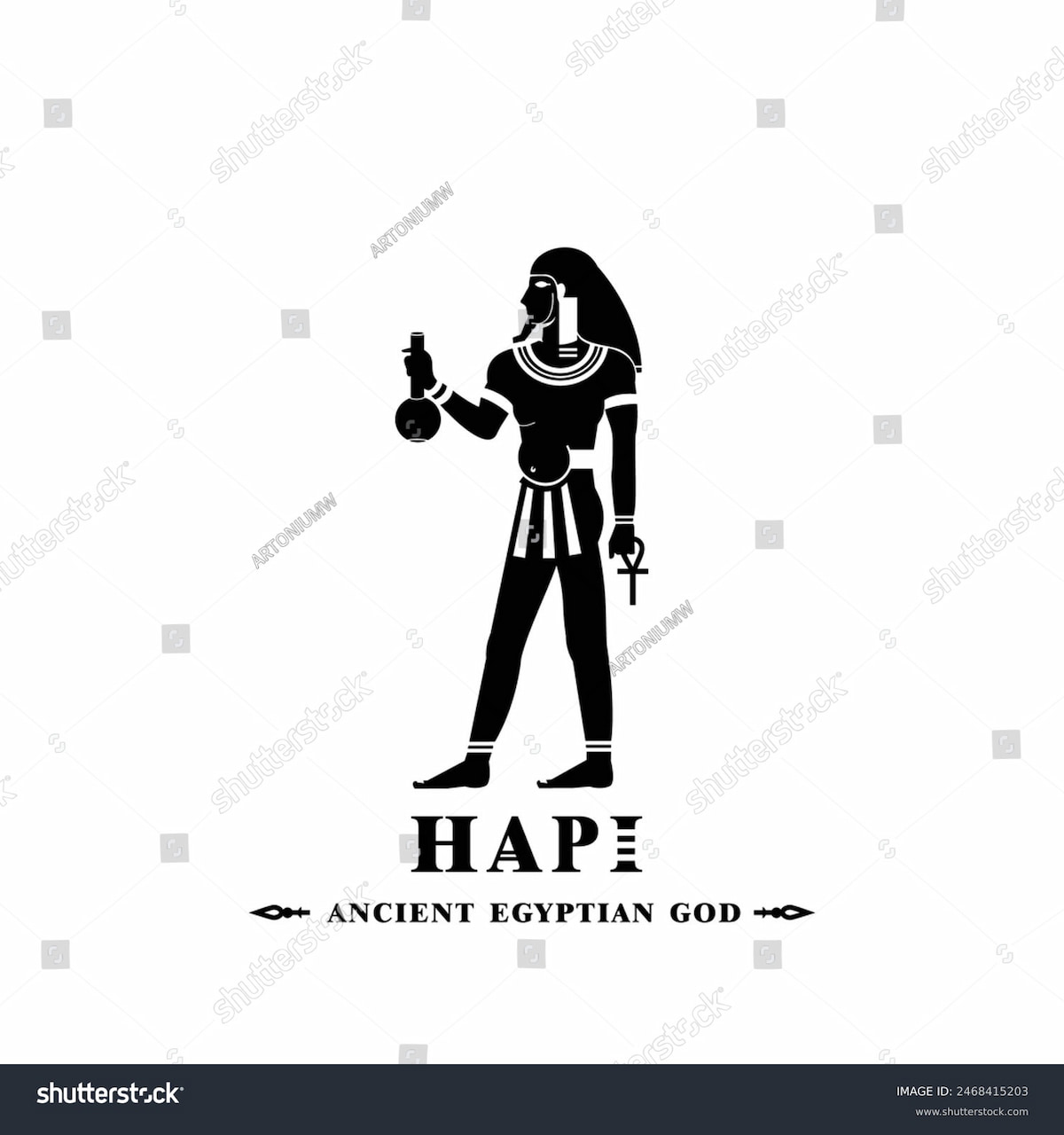
Egyptian God Hapi
Mythology about Hapi
The annual flooding of the Nile was occasionally said to be the Arrival of Hapi. Since this flooding provided fertile soil in an area that was otherwise desert, Hapi symbolised fertility. He had large female breasts because he brought a rich and nourishing harvest. Due to his fertile nature, he was sometimes the “father of the gods. He was a caring father and helped to maintain the balance of the cosmos, the world or universe regarded as an orderly, harmonious system.
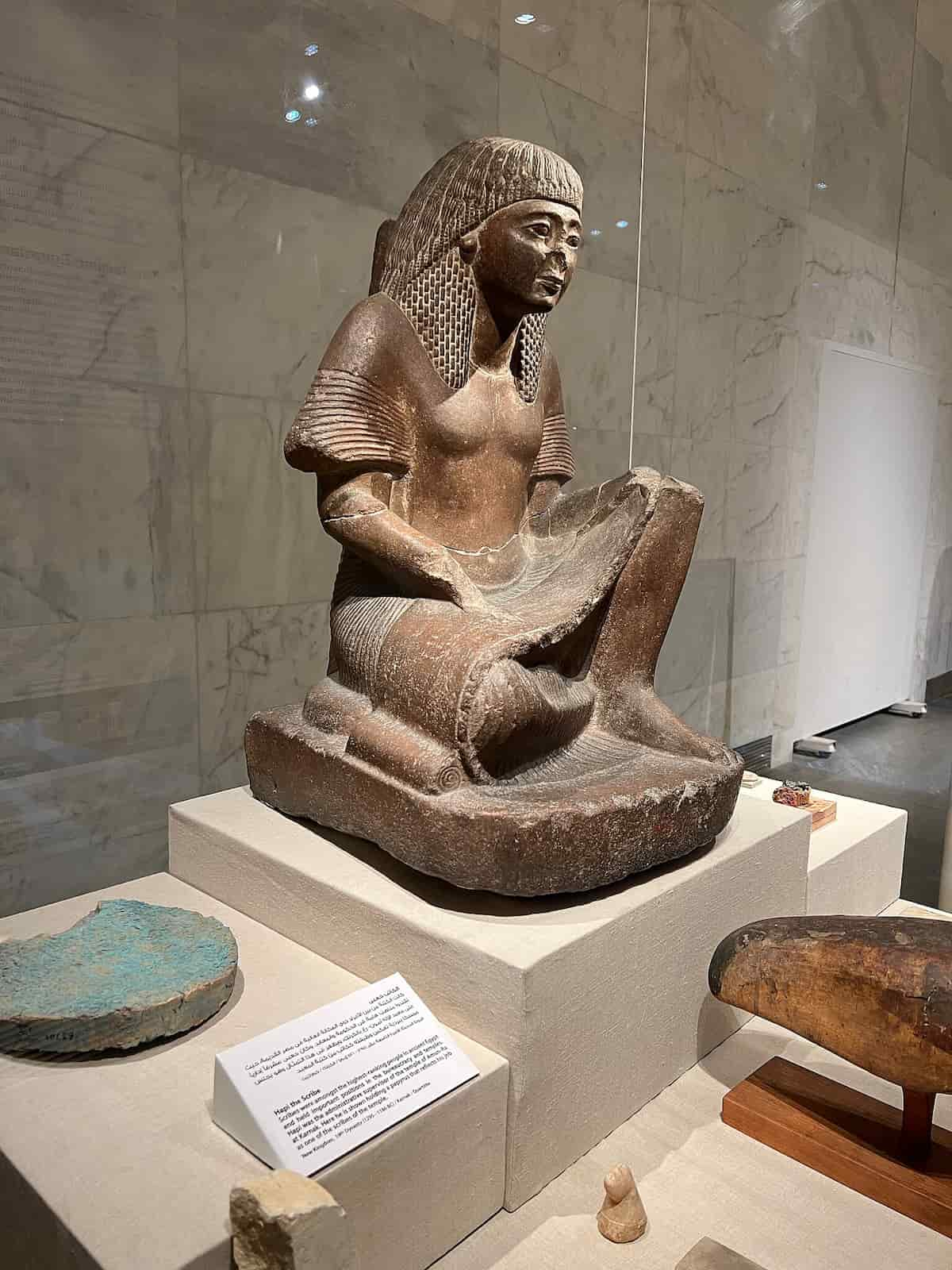
Statue of Hapi the Scribe, 19th dynasty
He was thought to live within a cavern at the supposed source of the Nile near Aswan. The cult of Hapi was mainly located at the First Cataract, named Elephantine. His priests shared in rituals to ensure the steady levels of flow required from the annual flood. At Elephantine, the official nilometer, a measuring device, was carefully monitored to predict the level of the flood, and its priests must have been intimately concerned with its monitoring.
Hapi was not the god of the Nile itself but of the inundation event. He was also a “friend of Geb”, the Egyptian god of the earth, and the “lord of Neper”, the god of grain.
Who was the Wife of Hapi?
Hapi of Upper Egypt was called Hap-Meht and was the husband of Uatchet, the cobra goddess. The Hapi of Lower Egypt was called Hap-Reset and was the husband of Nekhbet, the vulture goddess
Was Hapi male or female?
Although male and wearing a false beard, Hapi was pictured with pendulous breasts and a large stomach, as representations of the fertility of the Nile, he was usually given blue or green skin, representing water. Other attributes varied depending on the region of Egypt in which the depictions exist. In Lower Egypt, he was adorned with papyrus plants and attended by frogs, present in the region, and symbols of it. In Upper Egypt, the lotus and crocodiles were more prevalent in the Nile; thus, they were the symbols of the region and those associated with Hapi.
Egyptian God Hapi was often carrying offerings of food or pouring water from an amphora, but also, very rarely, was depicted as a hippopotamus. During the Nineteenth Dynasty, Hapi is often depicted as a pair of figures, each holding and tying together the long stem of two plants representing Upper and Lower Egypt, symbolically binding the two halves of the country around a hieroglyph meaning “union”.
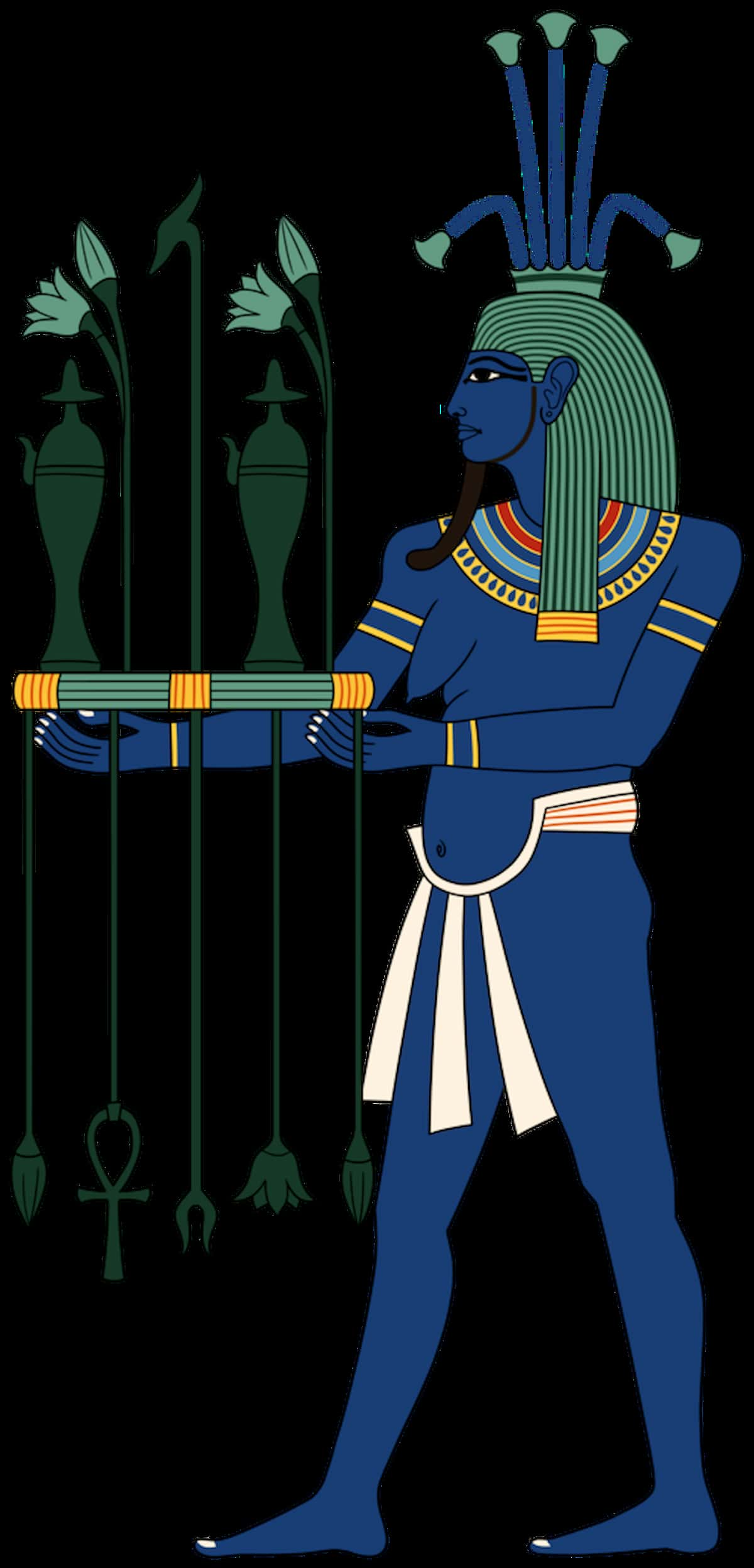
Hapi, the Nile god
This symbolic representation was often carved at the base of seated statues of the pharaoh. Egyptian historian Al Maqrizi (1364–1442) related in his “El Khutat El Maqrizia (The Maqrizian Plans) that living virgins were sacrificed annually as “brides of the Nile” (“Arous El Nil”), and this has been historically accepted as late as the 1970s, but this claim is disputed by some Egyptologists such as Bassam el-Shammaa.
King Hapi At Abu Simbel
At Abu Simbel, below the seat of one of the colossal statues of Ramesses II (c.1279-1213 B.C.E.), is this sunk relief of the Egyptian god Hapi, the personification of the Nile flood. The figure of Hapi appears twice, tying stems of plants around the hieroglyph for “unite.” The extended foot of each Hapi figure rests on the hieroglyph, which is a lung from which a windpipe projects straight up from the centre, forming a “T” at the top. On the left, Hapi holds stems of the lotus (symbol of Upper Egypt); on the right, he holds stems of the papyrus (Lower Egypt).

HAPI
Egyptian God Hapi’s crowns also display these plants. Hapi is androgynous because he has both male and female characteristics, suggesting the fertility of the land, which results from the Nile flood. This androgyny explains his pendant breasts and swollen belly. The centralised image of the lung and windpipe flanked by the two figures of Hapi illustrates the Egyptian concern for balance and order. The cartouche of Ramesses II sits directly above the lung and windpipe.
What animal is the Egyptian god Hapi?
Egyptian God Hapi was an Egyptian God of the underworld. Hapi is depicted with the head of a Hamadryas baboon and is said to protect the lungs of the deceased. Egyptian God Hapi is presented in the Coffin Texts as” the Primaeval One of earth” who was created by Ra as soon as he came out from the dismal water of Nun, and some myths present him with some features of Nun.
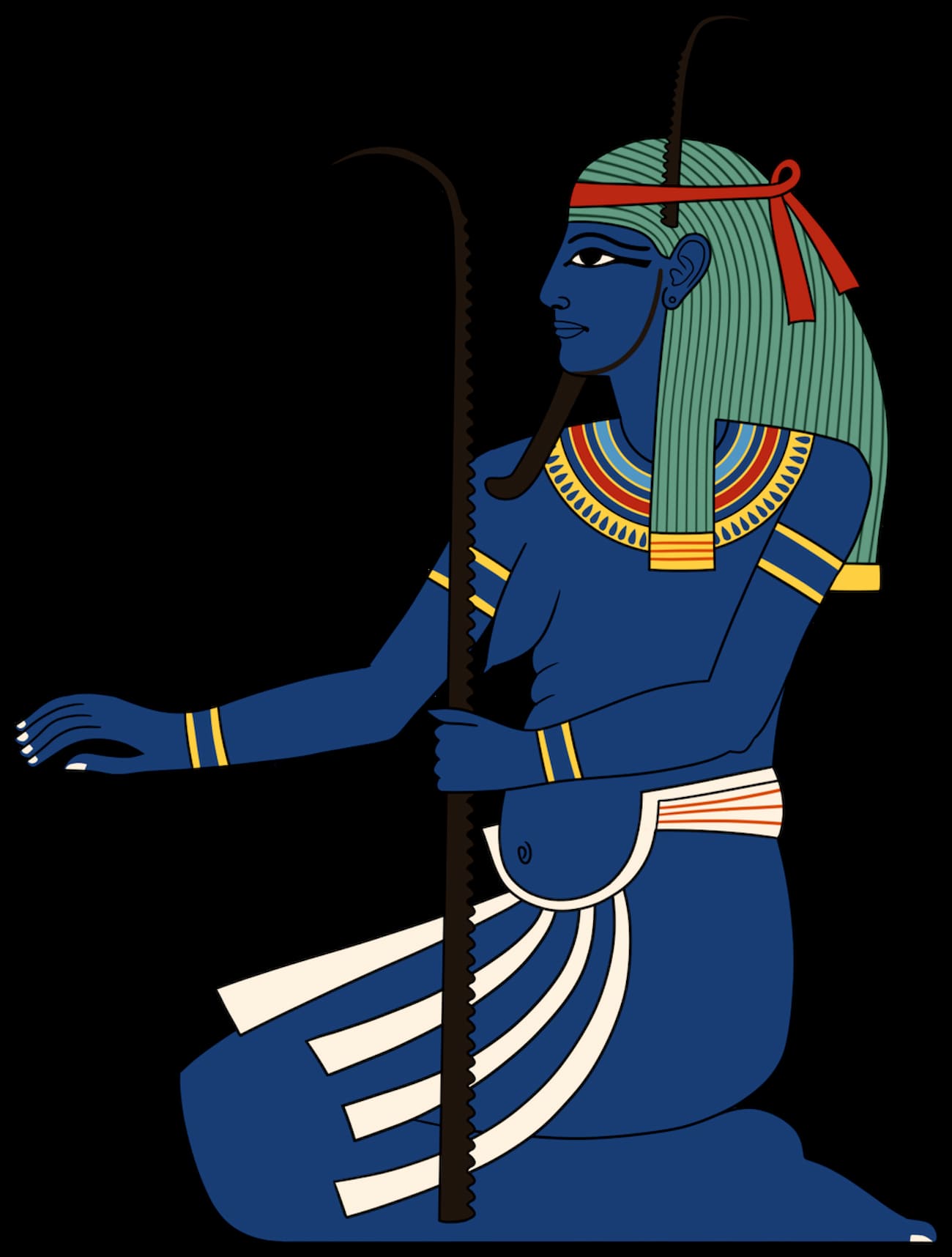
Nun God
In addition to that, he was believed to have some divine powers that helped the recently dead souls in obtaining some divine features like him. One of the vignettes of the Book of the Dead presents the recently dead praying to have the same power of Hapi over the mortal and immortal creatures.
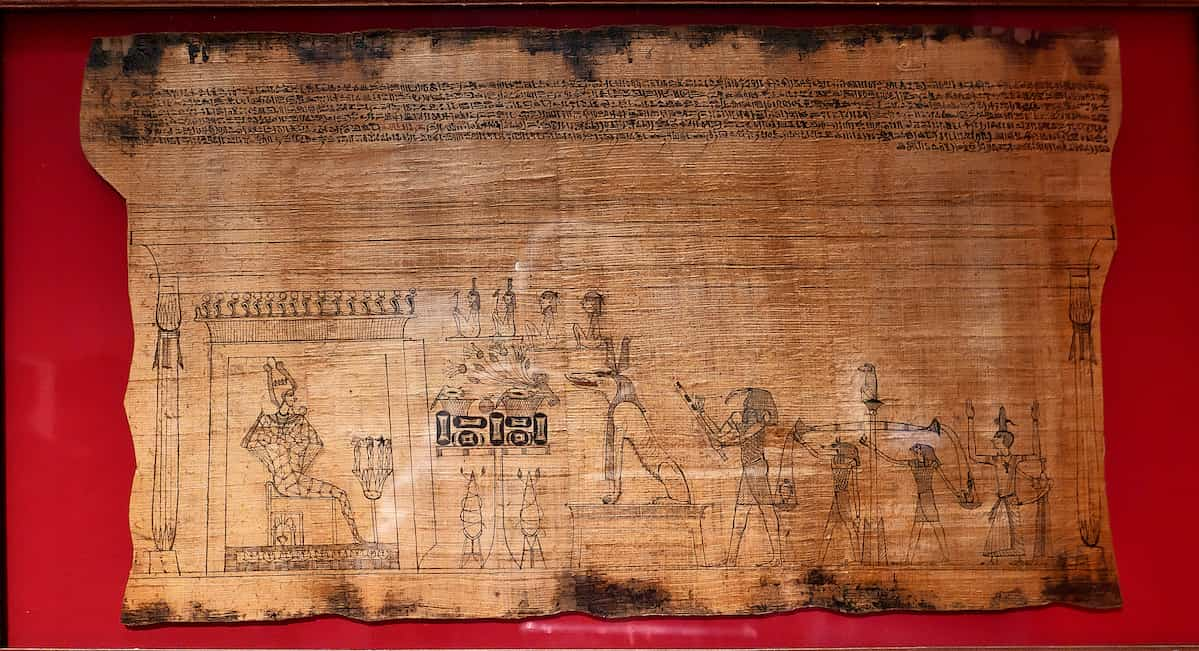
The Book of the Dead
The myth of Isis and Osiris is one of the prominent stories in which Hapi is depicted as the god of vegetation who helped Isis in her search for the parts of her husband’s body that Seth threw into the river. In the Pyramid Texts, Hapi is entrusted with more tasks in the underworld, including providing King Unas with the grains of rejuvenation and with food in the underworld.
Conclusion
Egyptian God Hapi was a pivotal ancient Egyptian god personifying the Nile’s annual flood. That is vital for the nation’s survival and prosperity. Revered for bringing fertility and abundance, Hapi was depicted with male and female characteristics, symbolised by a rounded belly and pendulous breasts, to signify nourishment and a rich harvest. Though he was not the god of the Nile itself, he represented the life-giving inundation and was highly respected, with his cult focused on monitoring water levels to predict floods and ensure bountiful harvests for the Egyptian people.











